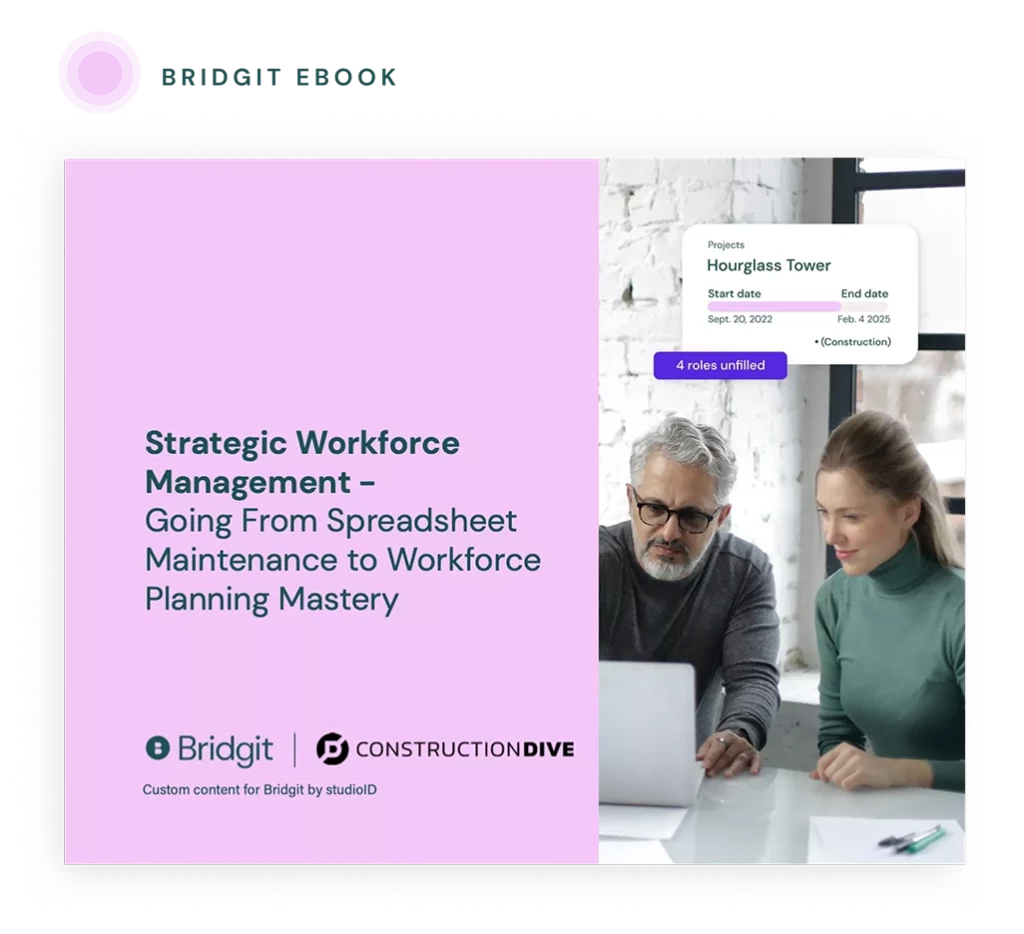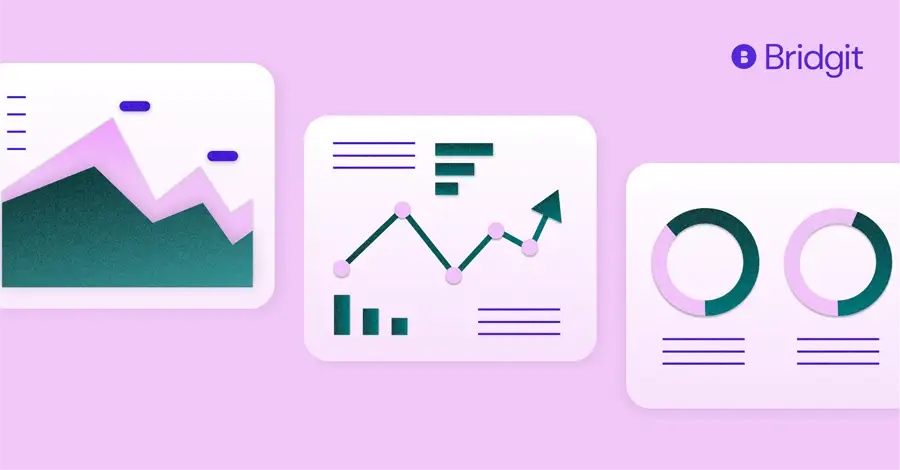Table of Contents
For specialty contractors, a large portion of success hinges on the ability to field the right team for the job. From managing multiple projects to dealing with skills shortages, the challenges are abundant. A key to navigating these challenges lies in effective workforce planning. Knowing who you have, what they can do, and where they can best be assigned.
While it sounds simple, this isn’t an easy thing to accomplish, especially with the scattered systems contractors are using today. These systems make it difficult, and sometimes impossible to leverage the necessary information you need to make the best decisions.
On the other hand, by effectively leveraging data, you can make informed decisions that drive efficiency and reduce costs to get the most out of your team. Whether it’s understanding your current workforce profile, identifying training and development opportunities, or making forecasts based on workload and cost data, analytics play a crucial role.
In this article, we’ll explore which data to track, how to analyze it, and how to use this information to make strategic decisions.
The role of data and analytics in workforce planning
Workforce planning is a systematic process for identifying and addressing the gaps between the workforce of today and the staffing needs of tomorrow.
But how can you make the right decisions without the right information? That’s where analytics come into play.
Analytics involves using data to discover and interpret meaningful patterns, which can then be used to drive decision-making. Workforce analytics specifically provide valuable insights into employees’ skills and performance, project requirements, training efficacy, and cost efficiency.
For example, by analyzing your team’s skill set inventory, you can identify whether you have the necessary skills for upcoming projects within your current team, or if you need to hire new workers or provide additional training.
Successful analytics essentially provides the tools to gather and interpret these data points. With analytics, specialty contractors can transform their workforce planning from a guessing game into a data-driven, strategic process.

Looking to be more strategic with your people?
We partnered with Construction Dive to outline the steps any contractor can take to be more strategic with their workforce management.
Understanding your current workforce profile
A key starting point for effective workforce planning is to get a comprehensive understanding of who you have on your team, their skills, and how they perform.
Firstly, let’s consider your team’s skill sets. A well-maintained inventory of your workforce’s competencies is a treasure trove of insights. What specialties do your plumbers have? Can your electricians handle HVAC systems? By keeping track of your workforce’s skills, qualifications, certifications, and experience, you can make informed decisions about which workers to assign to which projects.
Secondly, you also want to keep track of performance data, and not just for annual reviews. Consistently tracking and analyzing job completion rates, client satisfaction scores, quality of work, and other performance metrics, you can gain a nuanced understanding of your workforce’s strengths and areas for improvement. This data can help you identify high-performers who might be ready for more challenging projects or team members who might need additional training or support.
Project-based workforce needs
As a specialty contractor, you’ll find yourself juggling a wide range of projects, each with its own unique requirements and challenges. To avoid costly missteps, it’s crucial to have a detailed understanding of project-based workforce needs.
Project data plays a critical role in workforce planning. This type of data includes details about past and upcoming projects, such as project duration, the skills required, the number of workers needed, and any specific certification or qualification requirements. This data will provide the workforce requirements for each project.
For instance, let’s say you’re a specialty contractor who frequently handles HVAC installation projects. By analyzing data from past HVAC projects, you might find that projects of a certain size typically require a team of four, including at least two workers with advanced certification. Knowing this, you can make sure to have the right team in place when you bid on similar projects in the future.
Beyond helping with individual project planning, analyzing project data over time can also reveal larger trends. For example, if you notice that the demand for solar panel installation has been growing, you might decide to train more of your workers in this area or consider hiring a solar specialist.
Effective project data analysis ensures that you’re always prepared to meet the unique needs of each project.
Forecasting workload and cost data
Having quality forecasting data helps you anticipate future needs and make strategic decisions about staffing and budgeting.
What is forecasting exactly?
Forecasting involves projecting future work volumes based on factors like the contracts already won, pursuits in progress, seasonal trends, or even larger market forces. It gives you an estimate of how much work you will have in the coming weeks, months, or even years, helping you plan your workforce needs accordingly.
For example, if you have four projects you’re pursuing now, do you know if you have the personnel needed to take on those projects if they were won? Having quality forecasting data will tell you the answer and can help inform other teams like HR that they need to put together a recruiting plan to supply the labor needed.
Cost data, on the other hand, tells you the financial implications of your workforce decisions. It includes costs associated with hiring, training, compensating, and retaining employees. When you factor in these costs, you can make decisions about whether it’s cost-effective to hire new workers, invest in training for existing staff, or outsource certain tasks.

Interested in improving labor forecasting for your projects and pursuits?
Check out our post outlining how Bridgit Bench makes forecasting days, months, and years in advance easy.
How can I get this data?
Now that we’ve discussed the key data to pay attention to, it’s time to look at how to gather, track, and analyze it. Many contractors resort to traditional methods such as spreadsheets for this purpose, but these tools have limitations.
Relying on spreadsheets for workforce planning is time-consuming, error-prone, and inefficient. The data is often scattered across multiple files, making it difficult to obtain a holistic view of your workforce. Updates are manual, which can lead to out-of-date or inconsistent information. Lastly, they simply can’t house most of the data we’ve discussed thus far.
Luckily, workforce planning tools like Bridgit Bench were created to make this data easy to track, analyze, and be acted upon. In the tool, you’ll have a centralized place where your people and projected data will be housed, and you can customize any fields you want to pay attention to.
That means you can easily see skills, certifications, performance, and cost. From there you can allocate people to projects and pursuits and see how those allocations affect your labor forecast days, weeks, months, and years in advance.
As a specialty contractor dealing with consistent labor shortages, turbulent economic conditions, and an influx of work from the IIJA, it’s vital you have clarity on how you can best utilize your most expensive and most important resource – your people.


